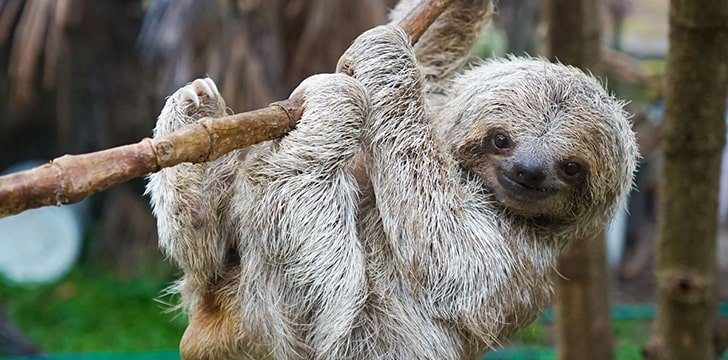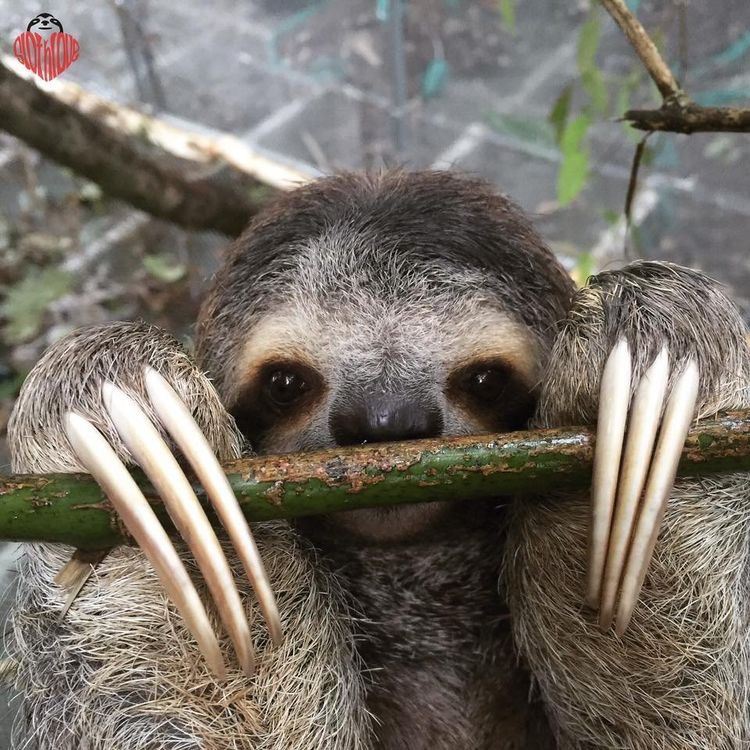
And if they do fall to the ground, it’ll be easy for the mother to retrieve her young and keep them safe. This way, if the baby does fall, they won’t fall far. Before giving birth, the mother will first go down to tree branches at a lower elevation. "It takes a sloth an entire month to digest just one leaf, meaning that they don't have much wiggle room when it comes to expending energy. Sloths Give Birth in a Most Unusual Way Sloths give birth whilst hanging upside down. "A sloth's entire lifestyle is based around avoiding detection and using as little energy as possible," writes zoologist and Sloth Conservation Foundation founder Becky Cliffe in a blog post. More than half of all sloth deaths occur during potty time when these creatures are very vulnerable to predators. The stool is pushed out in one fell swoop so impressive that horrified/transfixed bystanders can see the animals stomach shrink. "This behaviour puts them at threat to a lot of predators (like jungle cats) and wastes a lot of their precious energy - which they do not have much of!" she adds. Sloths do this despite the fact that it's quite perilous. Instead they "make the slow descent to the canopy to poo at the base of trees," Kennedy says. They spend most of their life hanging upside-down from tree branches, whether sleeping, eating, mating or giving birth. Two-toed sloths are slightly larger than three-toed sloths. The plant gives it a greenish tint that is useful camouflage in the trees of its Central and South. Are sloths dangerous Sloths rely on their algae-covered fur to hide themselves in leafy treetops. Sloths are primarily nocturnal, sleeping for 15 hours during the day and waking up at night to eat. The overhair is parted on the abdomen and hangs down over the sides of the body. The sloth is the world's slowest mammal, so sedentary that algae grows on its furry coat. Most other arboreal animals, like monkeys, poop from the trees, but not sloths. In fact, sloth bears move very quickly and even run faster than humans. Their chosen habitats are the rain and cloud forests of Central and South America. However, there’s a lot The Insane Biology of: Sloths Evolution of Animals True Facts. You see, sloths are arboreal creatures, which means that they live, work and play high up in the trees. 20 Interesting Facts About the Sloth Sloths are loved by lots of people thanks to their adorable looks. They also regulate their body temperatures by moving in and out of the sun.The week-long delay between bowel movements is not even the strangest thing about sloth pooping habits. They have reduced muscles, about half the relative weight of most terrestrial mammals, so they cannot afford to keep warm by shivering. Sloths have a metabolic rate that is only 40 to 45 percent of what would be expected for their body weight. Sloths maintain a low, but variable body temperature that ranges from 86 to 93 degrees Fahrenheit (30 to 34 C), which falls during cooler hours of the night, in wet weather, and whenever the animals are inactive. Sloth Bear Shaggy, dusty, and unkempt, the reclusive sloth bear makes its home in the forests of South Asia. However, there’s a lot more to them than their cute fe. However, this can get confusing as both types have three claws, or ‘toes’, on their hind limbs. 20 Interesting Facts About the SlothSloths are loved by lots of people thanks to their adorable looks. Their hair curves from stomach toward their back this is opposite from most mammals. There are two types of sloth, two-toed and three-toed.

Their fur also harbors moths, ticks and beetles. This greenish tint camouflages them in the forest canopy.

9 Sloth claws are designed for hanging upside down from tree branches. 8 There are six different species of sloths three-toed sloth, two-toed sloth, pygmy three-toed sloth, maned three-toed sloth. They possess a short, fine undercoat, and an overcoat of longer, coarser hairs, which turn green in moist conditions due to algae growth.Įach strand of brownish-gray hair has grooves running from top to bottom, where two species of blue-green algae grow. 7 The word sloth comes from the Spanish word slow which means lazy or inactive person. The head is short and flat, with a snub nose, rudimentary ears, and large eyes. A sloth's body consists of a short neck with four long limbs of equal length, ending in two 3 to 4 inch (8 to 10 centimeter) long curved claws.


 0 kommentar(er)
0 kommentar(er)
